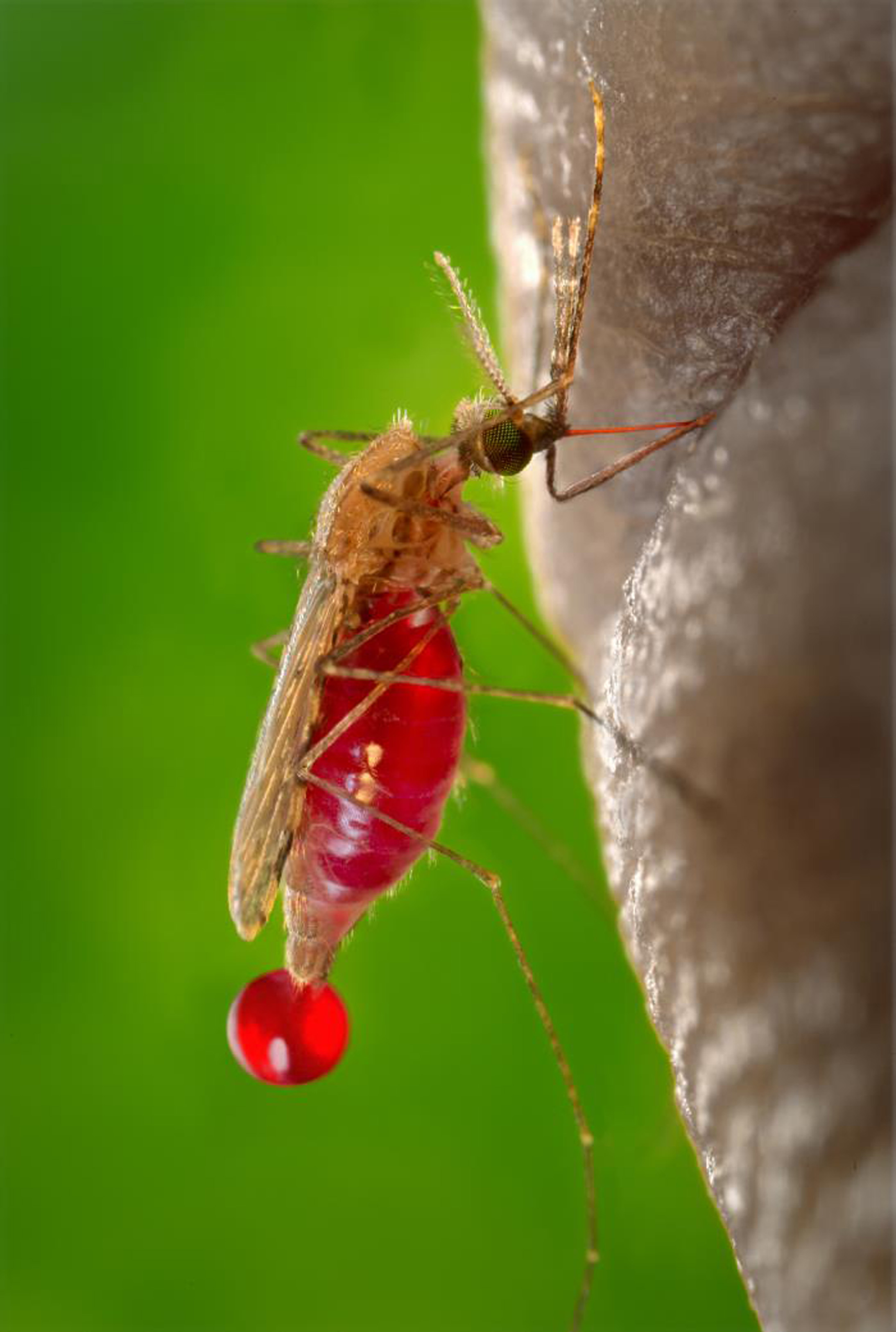Mosquitoes and malaria: Scientists pinpoint how biting cousins have grown apart

Certain species of mosquitoes are genetically better at transmitting malaria than even some of their close cousins, according to a multi-institutional team of researchers including Virginia Tech scientists.
Of about 450 different species of mosquitoes in the Anopheles genus, only about 60 can transmit the Plasmodium malaria parasite that is harmful to people. The team chose 16 mosquito species that are currently found in Africa, Asia, Europe, and Latin America, but evolved from the same ancestor approximately 100 million years ago.
Today, the 16 species have varying capabilities for transmitting malaria and adapting to new environments. The team sequenced their genomes to better understand the evolutionary science behind the differences.
The results, published recently in Science, will advance understanding about the biological differences between mosquitoes that transmit malaria, and ultimately, how species might be more precisely controlled to stop transmission.
“With the availability of genome sequences from Anopheles mosquitoes of divergent lineages, variable adaptations, and differing disease-transmission abilities, we now have the exciting opportunity to significantly improve our understanding of these important malaria vectors and develop new strategies to combat malaria and other mosquito-borne diseases,” said Zhijian Tu, a professor of biochemistry in the College of Agriculture and Life Sciences, and a Fralin Life Science Institute affiliate.
The research was led by Daniel Neafsey, a scientist with the Broad Institute, Robert Waterhouse, a Marie Curie International Outgoing Fellow at the Massachusetts Institute of Technology, and Nora Besansky, a professor from the University of Notre Dame.
In a second related paper, also published last week in Science, a key finding was that the most dangerous species, Anopheles gambiae, is able to increase its transmission capabilities by swapping genes at the chromosome level.
“We found out that multiple rearrangements on the sex chromosome prevent the species from completely intermixing, while traits enhancing malaria transmission capabilities can cross species boundaries if other chromosomes encode them,” said Igor Sharakhov, an associate professor of entomology in the College of Agriculture and Life Sciences and a Fralin Life Science Institute affiliate.
The results advance the idea that a genetic process called introgression, where genes from one species flow into another, plays a role in evolution, in this case by enhancing the capacity of mosquitoes to transmit the malaria parasite.
The research in the second paper was led by Matthew Hahn, professor of biology and informatics at Indiana University, and Besansky.
Other Virginia Tech co-authors include Brantley Hall of Christiansburg, Virginia, a doctoral student in the Genetics, Bioinformatics, and Computational Biology program; Xiaofang Jiang of Wuhan City, China, a doctoral student in the Genetics, Bioinformatics, and Computational Biology program; Ashley Peery of Christiansburg, Virginia., a doctoral student in entomology in the College of Agriculture and Life Sciences; Chunhong Mao, a senior project associate at the Virginia Bioinformatics Institute, and Maria Sharakhova, a research scientist in entomology in the College of Agriculture and Life Sciences and a Fralin Life Science Institute affiliate.
Dedicated to its motto, Ut Prosim (That I May Serve), Virginia Tech takes a hands-on, engaging approach to education, preparing scholars to be leaders in their fields and communities. As the commonwealth’s most comprehensive university and its leading research institution, Virginia Tech offers 240 undergraduate and graduate degree programs to more than 31,000 students and manages a research portfolio of $513 million. The university fulfills its land-grant mission of transforming knowledge to practice through technological leadership and by fueling economic growth and job creation locally, regionally, and across Virginia.




